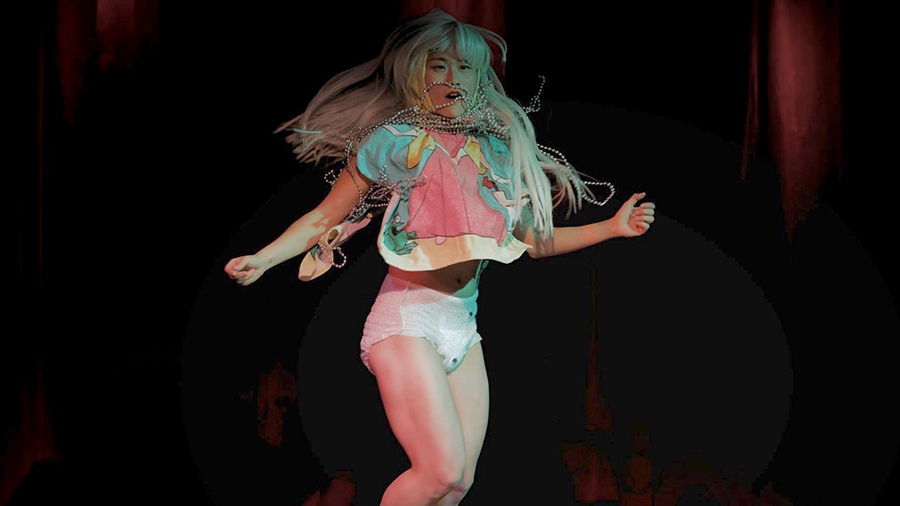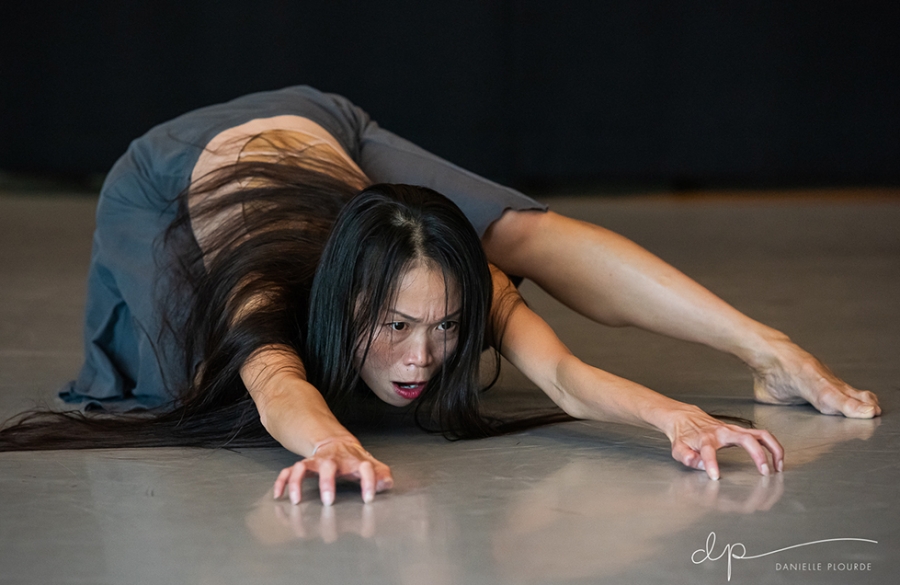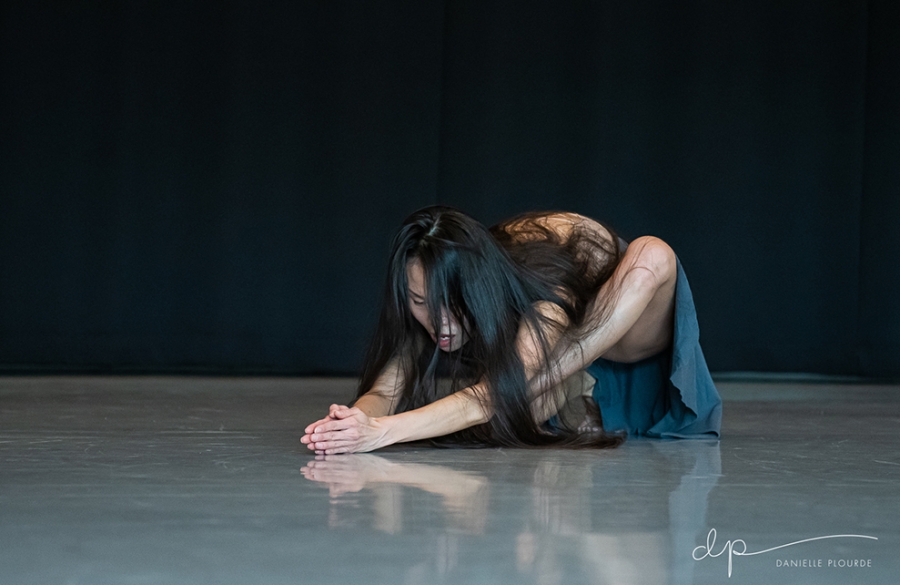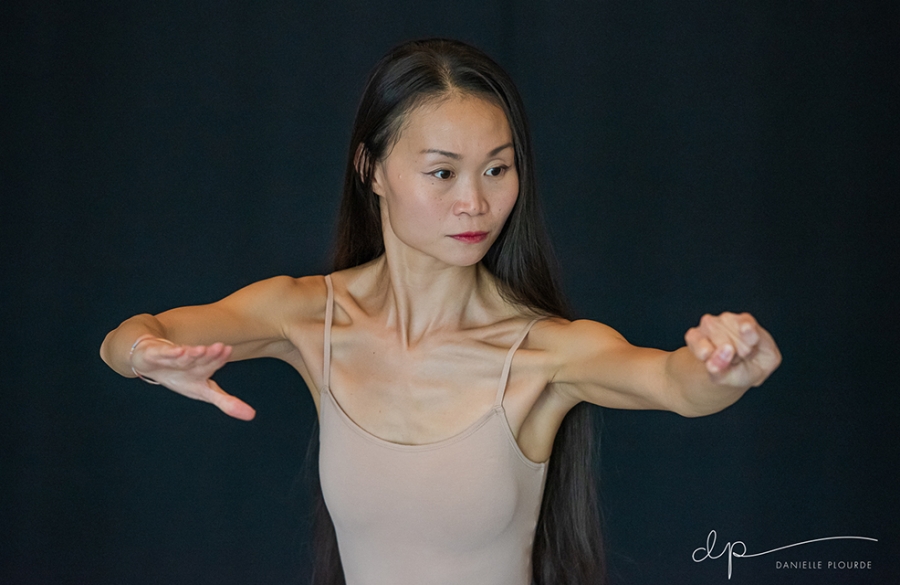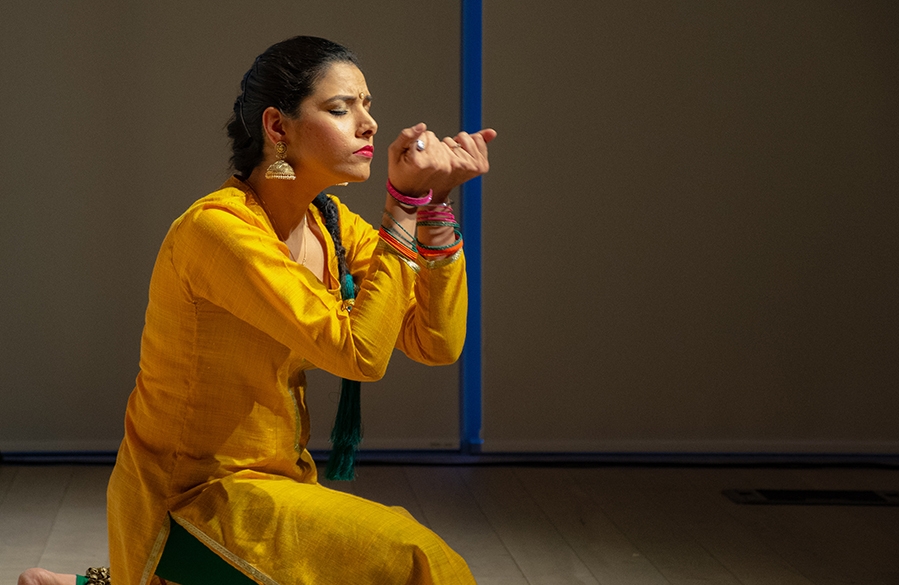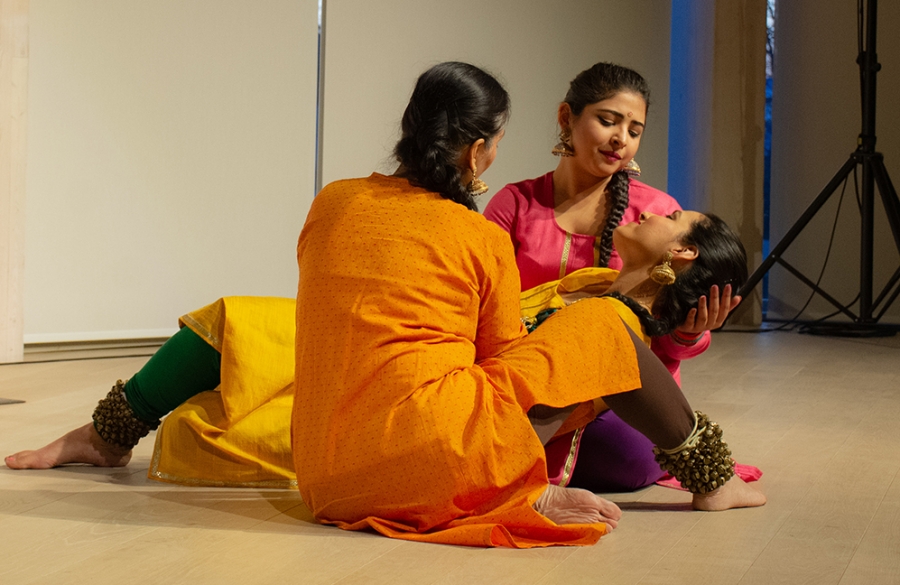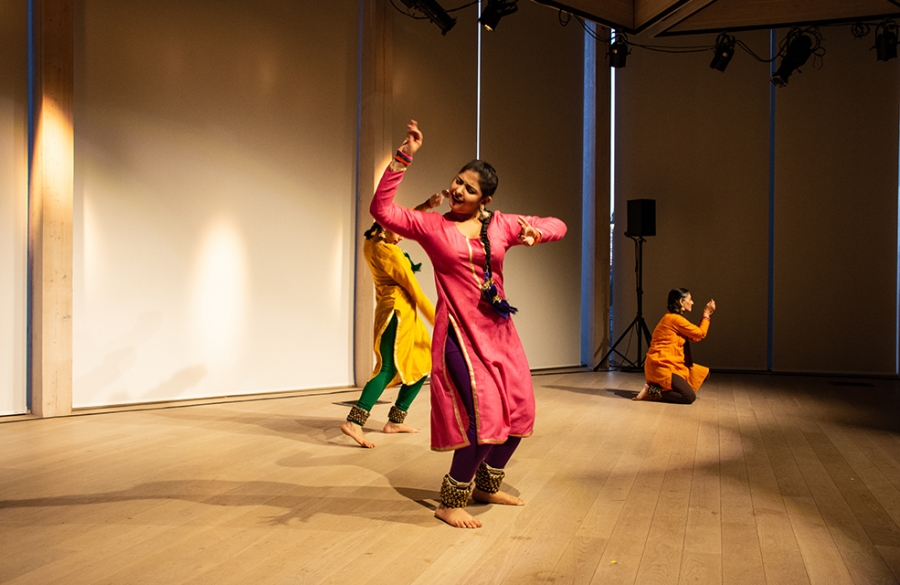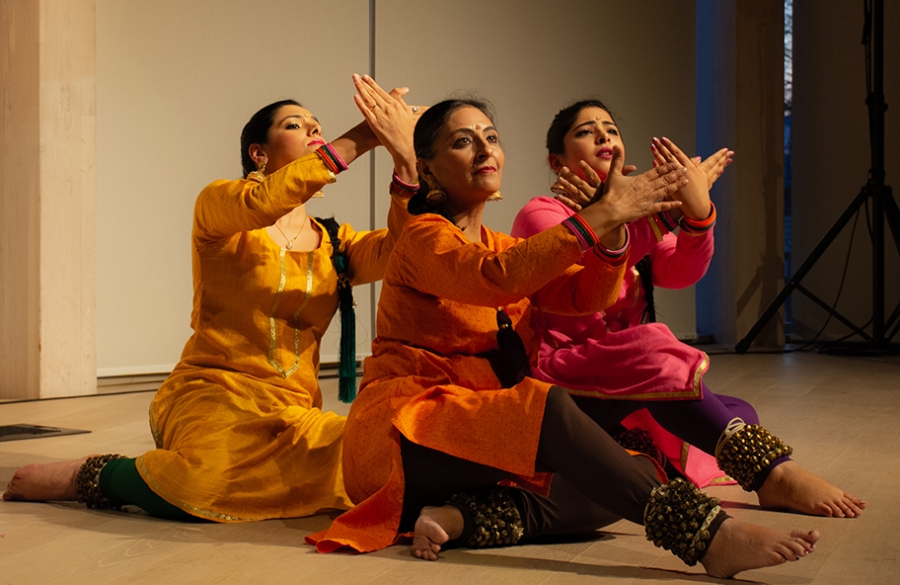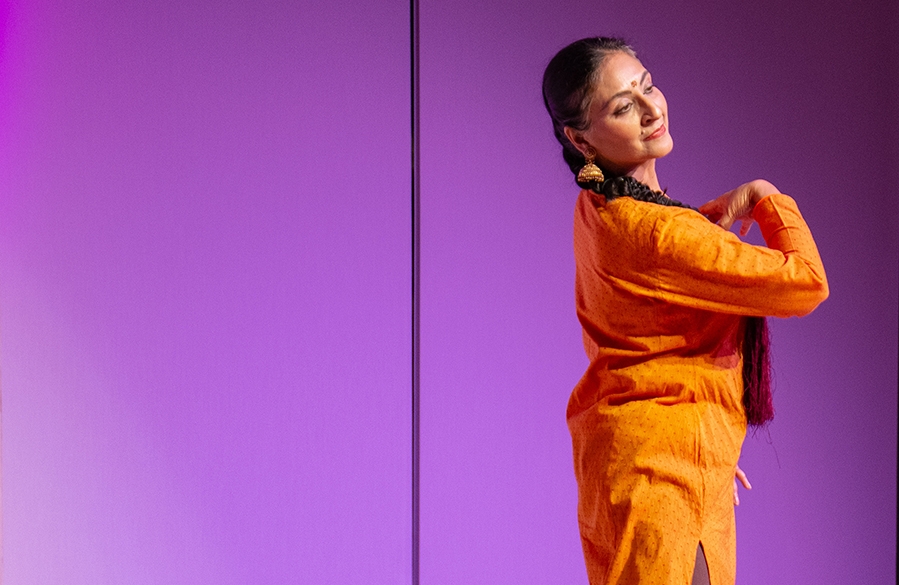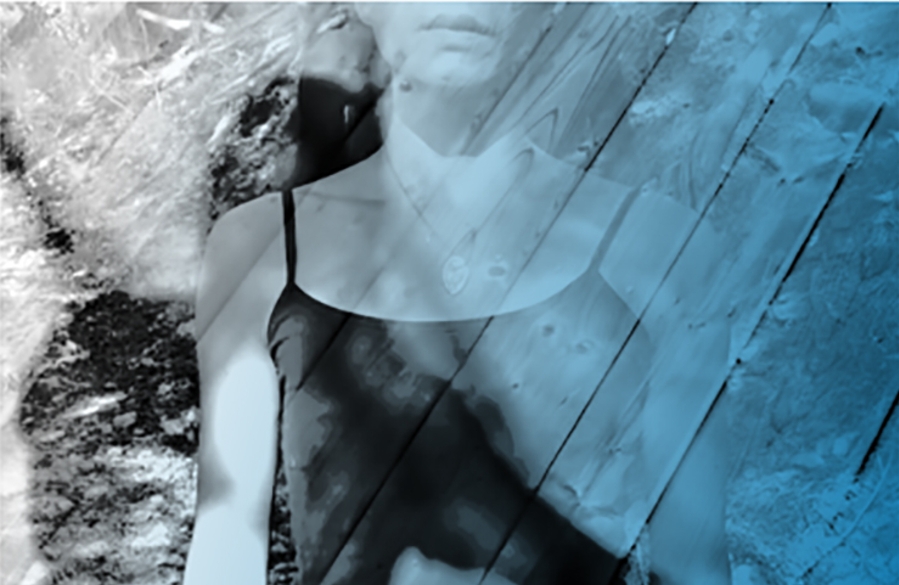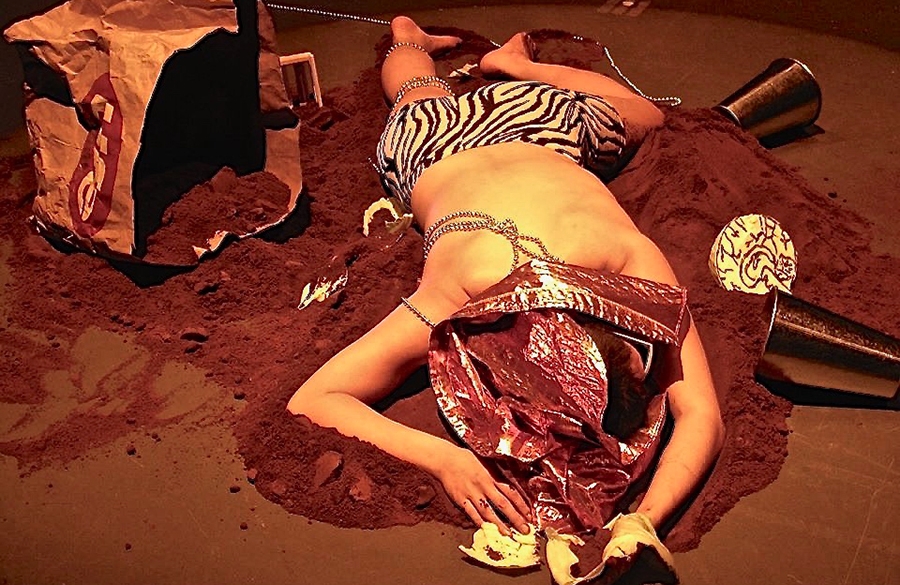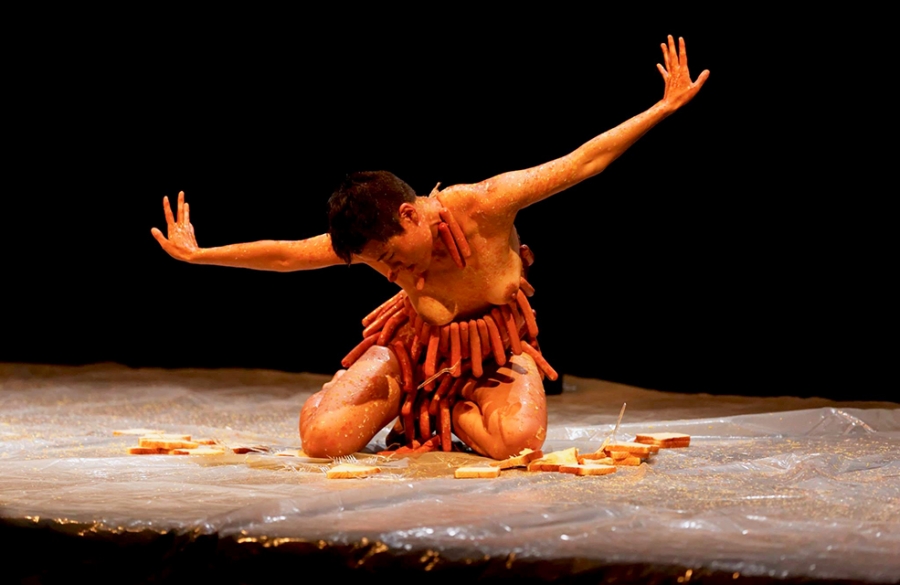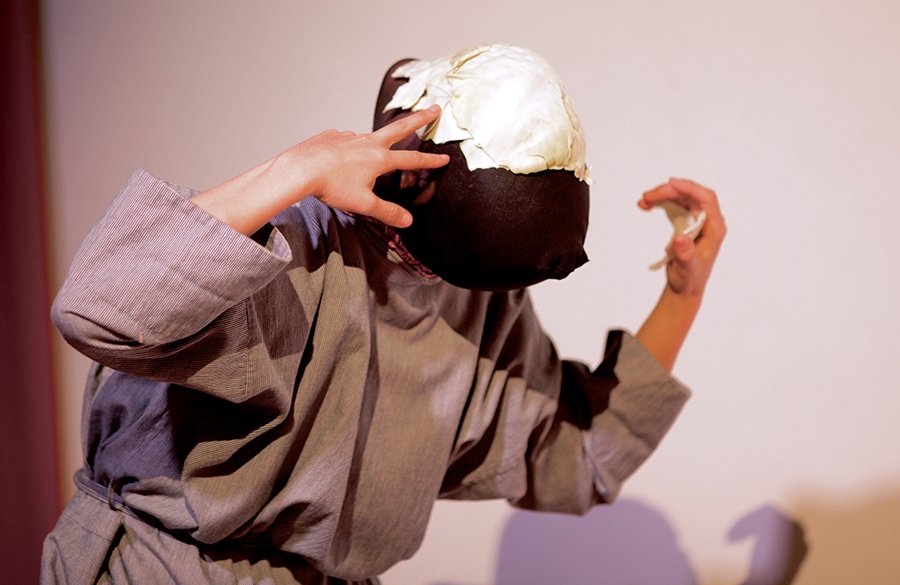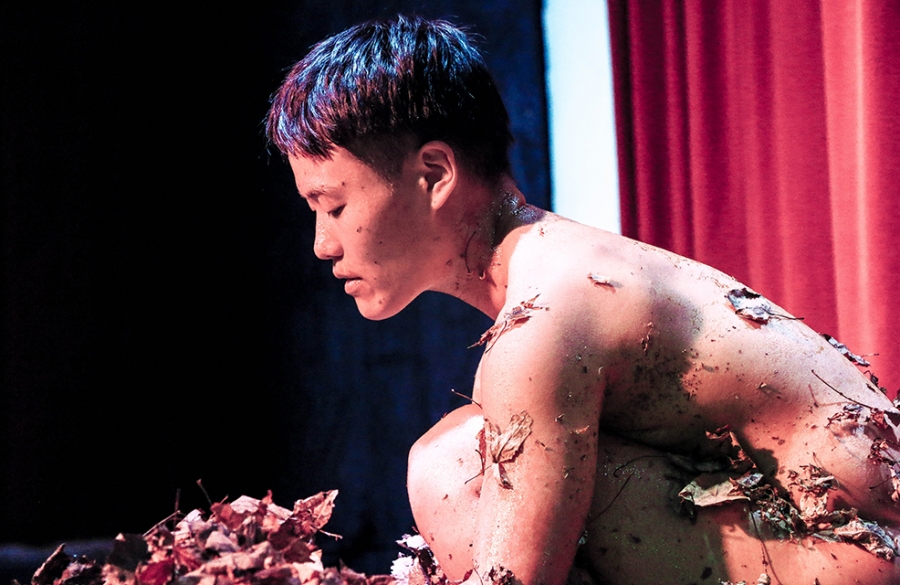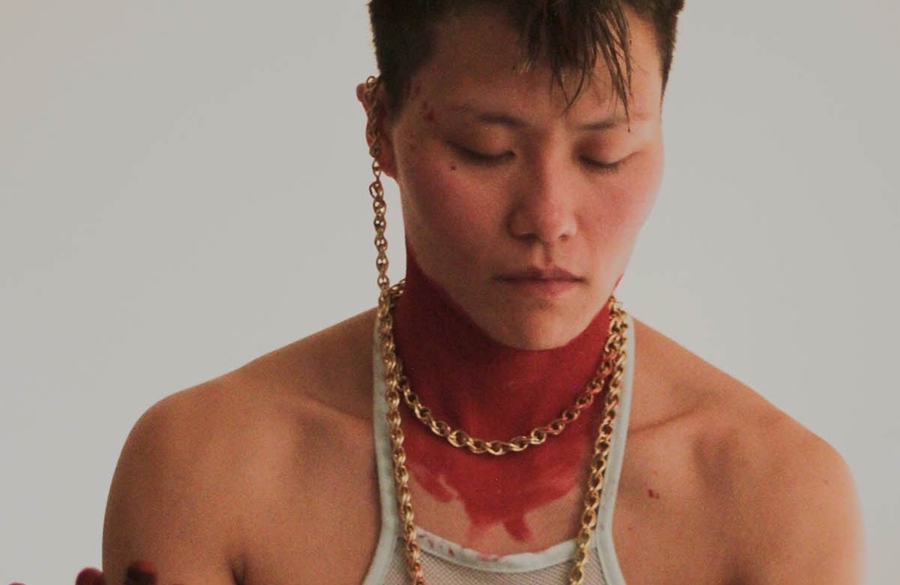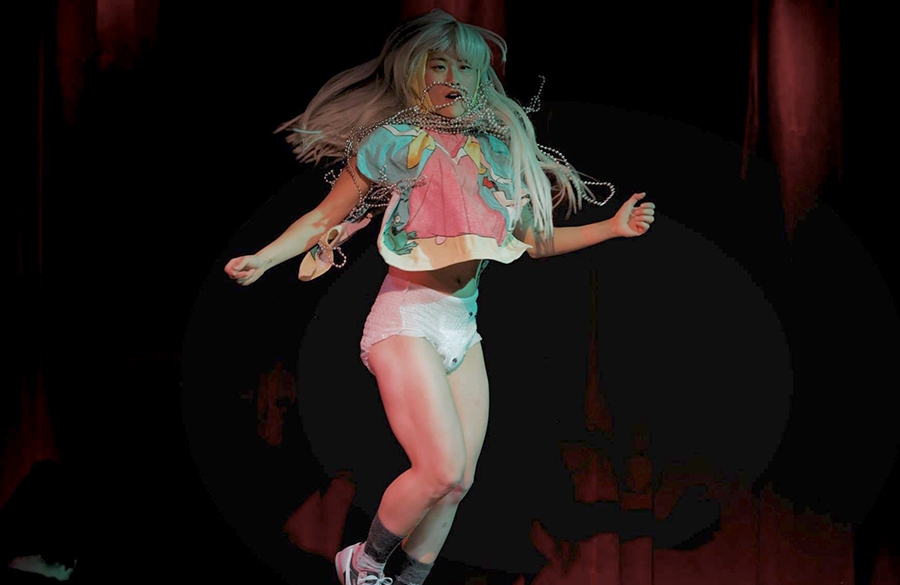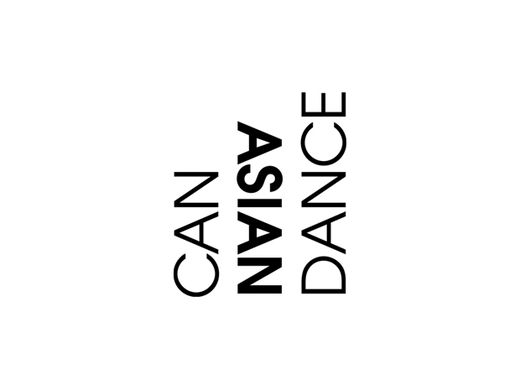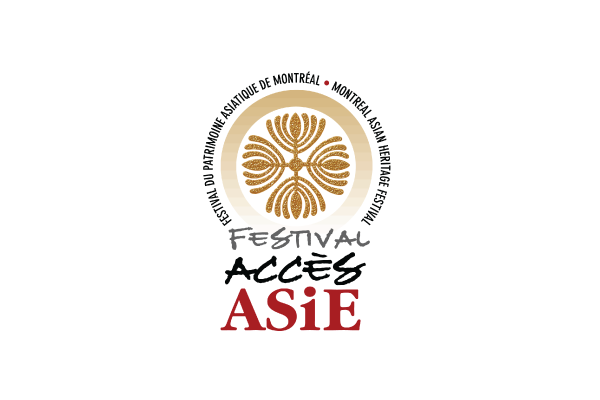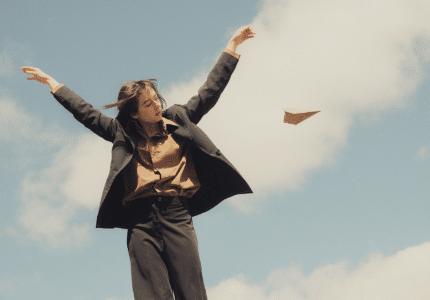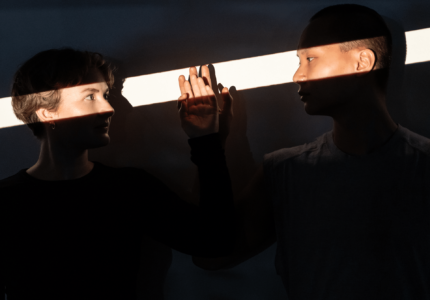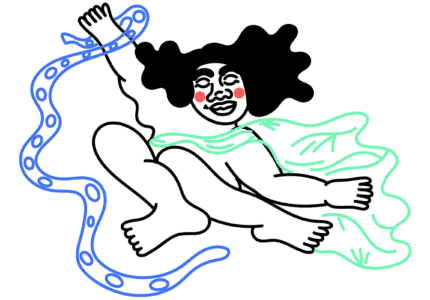Festival KickStart 2020
Deepti Gupta + Winnie Ho + Andrea Nann + Charo Foo Tai Wei
Following the gouvernement du Québec’s health emergency decree, this show is cancelled. For more information, click here
*****
CanAsian Dance’s KickStart program, in collaboration with Tangente and Festival Accès Asie, commissions Canadian choreographers, challenging them to develop and perform a short work that represents a significant new direction or constructive disruption in their approach to choreography. This year’s program features two choreographers from Ontario and two from Québec.
Jury
Khosro Berahmandi
Artistic & Development Director & Interim General Manager
Festival Accès Asie
Denise Fujiwara
Artistic Director
CanAsian Dance
Susan Lee
Assistant Professor
Department of Dance
School of the Arts, Media, Performance and Design
York University
Marco Pronovost
Curator
Tangente
Charo Foo Tai Wei
Jin Gu Bang (The Golden Stick Ritual)
Exploring her family’s Taoist past, Charo revisits different healing rituals that she experienced throughout her life. In this work, she shares the suffering caused by the cohabitation of buried languages that have tugged at her for a long time: on one side, the rational shēn yùn; on the other, Butoh. Risking a meeting of these two forms is akin to mixing water and oil. If the task is impossible, the pursuit remains rich and surprising. Jerky forward thrusts, an inner quest embodied in a series of selfless movements within a soundscape that takes the spectator on a spiritual journey.
Choreographer and performer Charo Foo Tai Wei
Dramaturge Dulcinea Langfelder
Sound designer David Blouin
Lighting designer Rodolphe St-Arneault
Costume designer Julie Pichette
Trained in modern dance and Chinese classical dance, Charo Foo Tai Wei arrives in Québec City in 2005, where she trains in contemporary dance at École de danse de Québec. From 2007 to 2013, she performs in Robert Lepage’s production The Blue Dragon (Ex Machina) as an actress, dancer, and choreographer. Since 2010, Charo has traveled to North America, Europe, and Asia to give classical Chinese dance workshops and to perform in festivals. In 2015, she discovers Butoh with Natsu Nakajima, Yukio Waguri, Atsushi Takenouchi, Yumiko Yoshioka, and Rizhome Lee. Recently she attended Tadashi Endo’s workshop which inspires her to research selfless body initiation. Now, she combines Classical Chinese dance and Butoh to develop her own choreographic language.
Based in Montréal, David Blouin has worked as sound engineer and designer and technical director for over twelve years. He has a diverse body of work in theatre, dance, music, and contemporary art. He collaborates with Usine C, Mayday Danse, Elektra, Le Carré des Lombes, L’orchestre d’hommes-orchestres, and more. In 2019, he meets Dimitris Papaioannou in Montréal and has since started a new collaboration with the choreographer as their on-tour stage technician. David is also a self-produced multi-instrumentalist driven by energetic existentialism. His musical compositions are driven by intense vibrations that create an open and evasive connection in his body-mind.
Born in Brooklyn, Dulcinea Langfelder studied dance, mime with Étienne Decroux, and theatre. She moves to Montréal in 1978 to work with the troupe Omnibus. She founds her own company in 1985, creating multidisciplinary works that have toured extensively around the world. Vicious Circle (1985), The Lady Next Door (1989), Hockey! O.K.? (1991), Portrait of a Woman with Suitcase (1994), Victoria (1999), Dulcinea’s Lament (2008), Pillow Talk, an essay on dreaming (2016), Cheek to Cheek; love with a capital C (2019), and a musical collaboration with Philippe Noireaut are her major works. She created more than twenty choreographies for theatre, musical comedy, television, and cinema.
Julie Pichette is a multidisciplinary artist whose fields of exploration are dance, visual arts, and scenographic costumes. A graduate of L’École de danse de Québec, Julie perfected Japanese Butoh dance and Bharatanatyam. As a performer, choreographer, scenographer, and costume designer, she participates in various artistic events. In 2011, she completes a Master’s degree in Visual Arts in Creation at Université Laval (scenographic costume, visual arts, and Butoh dance). Her work focuses on solo choreographic creation for herself based on the scenographic costumes she designs and creates. In recent years, she has been exploring group choreography tinged with Butoh.
My parents sent me to learn Chinese classical dance in kindergarten. I fell in love with the feminine grace, strength, and the inner body spirit “shēn yùn”. The inner body spirit of this ancient art is more than a dance to me. In 2015, Butoh opened my universe: I discovered dance that originated in selfless body intentions; we let our muscle memory initiate the movement. This organic movement provokes thoughts and feelings that are buried deep inside our belly, beneath our conscious awareness. To put these two disciplines together is like mixing oil and water but a beautiful quest. In my creative process, I like to intertwine this attention to the inner body spirit with selfless intentions.
This internal work allows me to centre myself and explore inner spaces between my bones and body cells. I also include the water element, which creates an eternal flow of “Qi” throughout my body as a strong support.
Deepti Gupta (Ottawa)
Self-Portraits with Amrita
Deepti invites her performers to use their body memory to articulate their story through the exploration of self-portraits by painter Amrita Sher-Gil. Tales of migration and exile. How does one deconstruct a dance as heavily codified as Kathak to tell new stories? How does one connect the physicality of the formatted dancer with that forged by women’s everyday life in rural India? The choreographer is looking to slip into other times and places through folk dances. This dance-as-self-portrait represents the many facets of these women who are crafting a contemporary tradition.
Choreographer and performer Deepti Gupta
Performers Sukriti Sharma, Neetika Sharma
Spoken word artist Sheniz Janmohamed
Mentor Peter Chin
Lighting designer Jennifer Lennon
Composer Sandy Singh
Design consultant and video designer Praveen Yedamangala
Born in India, Deepti Gupta is an exponent of the elegant Kathak dance from North India. She is a disciple of renowned gurus of the Lucknow Gharana, Guru Munna Shukla, and Pundit Birju Maharaj. She studied choreography with Indian choreography pioneer Dr. Maya Rao and modern dance at le Groupe de la Place Royale in Ottawa. Deepti is Artistic Director of Arzoo Dance Theatre, which is dedicated to creating new works in dance that transcend geographical and cultural boundaries. Her work is at the cutting edge of South Asian dance and she loves to collaborate with musicians, designers, and new media artists. A relentless experimentalist, she has won a Dora Award for costume design. Deepti holds an MA in Dance from York University. Over the years she has been honoured to receive generous support for her creative work, including awards from the Chalmers and Laidlaw foundations as well as a company residency at the Banff Centre for the Arts.
Toronto-based Sukriti Sharma has trained under the able guidance of Sangeet Natak Academy awardee Guru Sh. Krishan Mohan Mishra, completed her ten years of training in Kathak, and holds a post-diploma from the National Institute of Kathak Dance, Kathak Kendra, in New Delhi. She holds a degree from Indira Kala Sangeet Vishwavidyalaya, Khairagarh. She has taught in India for several years and has now been teaching in Canada for three years. She has performed the repertoire of Padmashree Smt. Shovana Narayan for many years. She has also performed in various festivals in India and abroad. In Canada, she has performed in Kathak Mahotsava 2016 and 2018, and in Aroha Fest in 2017 and 2018.
Born in Libya to Indian parents, Neetika Sharma began her performance journey at the age of ten. Today, she is a passionate Kathak performer, choreographer, instructor, and arts manager. She is a founding member of the Millennial Arts collective, which put together a support group for young women dance artists of colour that practice traditional dance forms in Toronto. In the same city, she has received rigorous training from Gurus Hemant and Vaishali Panwar in the Indian classical dance form called Kathak. She has worked with and for many renowned senior artists and organizations in the industry. Neetika has a keen interest in exploring various layers of the traditional Kathak repertoire and in presenting them with new and relevant interpretations through research, creation, and performance.
Sheniz Janmohamed (MFA) is a firm believer in fostering community through collaboration, compassion, and creativity. She strives to embody words through performance, land art, and writing in the ghazal form. A poet, artist educator, and land artist, Sheniz has performed her work in venues across the world, including at the Jaipur Literature Festival, the Alliance Française de Nairobi, and the Aga Khan Museum. Sheniz is the author of two collections of poetry: Bleeding Light (Mawenzi House, 2010) and Firesmoke (Mawenzi House, 2014), both of which have been taught at the University of Toronto. Her writing has been published in a variety of publications, including Quill & Quire, Arc Poetry Magazine, and Body & Soul: Stories for Skeptics and Seekers (Caitlin Press, 2019).
Peter Chin, born in Jamaica and based in Toronto and Cambodia, is a choreographer, composer, designer, writer, and artistic director of the interdisciplinary arts company Tribal Crackling Wind. Peter’s works have been presented across Canada and around the world to much acclaim. His work is the winner of five Dora Mavor Moore Awards, a Gemini Award, and the Murriel Sherrin Award for International Achievement in Dance, among other distinctions. Peter’s film Jamaican, created in collaboration with artist Jeremy Mimnagh, recently won best documentary at the Caribbean Lens International Film Festival Los Angeles, and Peter’s site-specific work for 40 Cambodian artists Here I Stand in Time was presented in sites around Phnom Penh, including at the Tuol Sleng Genocide Museum, in 2017.
Santosh Kumar Singh (Sandy) is a music composer and sound designer in the fields of contemporary Indian music, the performing arts, and new media. Having worked on more than 300 stage productions, 80 television serials, 50 documentaries, 120 albums, and 35 major film productions, he is well-known in the field of music production. He has also been part of more than 40 band start-ups and choirs throughout India and abroad. Working with various NGOs, he has been actively involved in working with street children of the National Capital Region of Delhi. He is now busy working for his sound design company SOUNDPRO1.
Praveen Yedamangala is a scenographer and performance maker. He completed his diploma in Theatre Arts from Ninasam Heggodu, graduated in Fine Arts from CAVA Mysore, and holds a postgraduate degree from N.S.D with a specialization in Design & Direction. He has worked in various parts of India, including at Ninasam Heggodu, Rangayana Mysore, and Hcrftr Himachal Pradesh. He has travelled to the U.K. (RADA), Russia, and China for various workshops. He is currently exploring to develop new visual languages in contemporary theatre practices.
Self-Portraits with Amrita explores the body language of Indian women in the diaspora. The self-portraits and paintings of Amrita Sher-Gil are used as springboards to reflect and explore culturally plural identities. Growing up in Canada, my body still has a memory of a woman’s physicality in rural India or of the way Indian women inhabit their clothing and their bodies. The creative process also goes beyond the classical training of Kathak dance to discover how the body of an Indian dancer can express itself in new ways. At the same time, we look at the dance vocabulary of Kathak and how it can be deconstructed to express new stories and experiences. The aim of the process is to create complete freedom of expression for Indian dancers who are often bound by a very strict classical system of movement.
Andrea Nann (Toronto)
Firehorse and Shadow
Andrea explores her Chinese astrological sign, the fire horse, which is rare and deemed undesirable for women. How does it influence her destiny and her way of perceiving her environment? Joined by shadow puppet artist Annie Katsura Rollins, Andrea investigates her relationships with time, sensation, and familial history through century-old cyclical systems like the Chinese zodiac and the Chinese body clock. A sequence of distant events takes shape through cycles of silence and shadow, sound and light. The stage becomes both the source of her experience and the outcome of her dive deep within herself.
Choreographer and performer Andrea Nann
Shadow puppet artist and performer Annie Katsura Rollins
Creative consultant Sarah Chase
Dramaturge Cindy Mochizuki
Lighting designer Jennifer Lennon
Andrea Nann was born and raised in Vancouver and is fourth generation Chinese-Canadian. She is the founding artistic director of Toronto-based Dreamwalker Dance Company. After graduating from York University’s Department of Fine Arts in 1988, Andrea was a full-time member of the Danny Grossman Dance Company from 1988 to 2003. Over the course of her 31-year career in contemporary and modern dance, Andrea has contributed to the creation of new works by over sixty dance and theatre creators. She continues to work as a guest artist with Peggy Baker Dance Projects, Tribal Crackling Wind, Astrid Dance, and Volcano. In 2016, Ontario Contact recognized Andrea as Artist of the Year for her contributions to the Performing Arts touring sector in Ontario.
Annie Katsura Rollins is a theatre and performing object creator, designer, and performer. Annie incorporates ethnographic research and apprenticeship into her work, with particular interest in traditional puppet forms in Asia and their intersection with ritual practice and community building. She was awarded a Fulbright Fellowship to canvas Mainland China for the last remaining shadow puppet artists in 2011 and recently completed a PhD on the possibilities of preserving intangible performative culture at Concordia University.
Sarah Chase is a performer and choreographer whose work has been presented across Canada and Europe for over twenty-five years, at such venues as the National Arts Centre (Ottawa), Festival TransAmériques (Montréal), DanceHouse (Vancouver), the Holland Dance Festival, Klapstuk Festival (Belgium), Salzburg Szene Festival (Austria), Kaaitheater (Belgium), Tanz Quartier (Vienna), Fondation Cartier (Paris), and Theater der Welt (Germany). Sarah is the recipient of the 2004 Canada Council for the Arts Jacqueline Lemieux Award for Excellence and the Prize of the Festival at the 2006 Munich Dance Biennale. She is an associate dance artist of the National Arts Centre in Ottawa.
I create multidisciplinary dances inspired by contemporary conversations. I believe that lived, sensory experience is the basis of all connection and connectivity, and from there life is shaped and designed. My current choreographic explorations place the body in a state of heightened awareness, meaning that my personal practice and physical training methods include activation and awakening of internal sensory systems. I tune my body to be responsive to external influences and there is a distinct quality of movement that results from such readiness, regardless of choreography being improvised or set; and there is a calm fluidity and directness with energy, an elegance, clarity of focus and flow.
Winnie Ho
aWokening
How does one reconnect with one’s roots once settled in a new land? A queer artist from Hong Kong, Winnie explores a traditional Chinese cooking instrument: the wok. She immerses herself in wok chi, the wok energy, which gives Cantonese cuisine its distinct taste. By cultivating an intimate relationship with the ingredients and the different wok cooking techniques, she is following a thread left by her Chinese ancestry so she can reclaim it. How can the body become both the cook and the recipe?
Choreographer and performer Winnie Ho
Dramaturge Hanako Hoshimi-Caines
Lighting designer Jennifer Lennon
Winnie Ho (Superhova) is a dance performance artist who seeks to explore and expand ideas of intimacy, empathy, and embodied eroticism. She continues to explore these topics by interacting with organic/inorganic matter and connecting with her Chinese-diaspora and queer identities. Furthermore, she questions conventional roles of spectatorship in performance and creates practices whereby boundaries between spectator and performer can be dissolved and redefined in the felt presence of immediate experience. Winnie seeks to activate more of the present moment in performance in relationship to time, space, and spectatorship.
My creative process involves using my senses (touch, see, smell, taste, sound) and the embodiment of materials, which have been inspired by my ongoing research and relationship with my queer identity, Chinese diaspora, and notions of pleasure and play. I continue to explore these topics by connecting to my Chinese culture and, specifically, I aim to merge the technique and methods of Cantonese (people from southern China) cooking into my diaspora-based research and dance-making process. I wonder: can the process of Cantonese cooking be translated into a dance choreography? I’m also curious to know if I can embody concepts such as braising 燉, steaming 蒸, pan-frying 炒, marinating 醃, and wok-chi 鑊氣 (the flavour, tastes, and “essence” imparted by a wok, which is a specialized iron pan exclusively used in Cantonese cuisine). By sensorially examining methods and materials used in Cantonese cuisine, I aim to connect, listen, and move intimately with the external: material, space, and audience.

